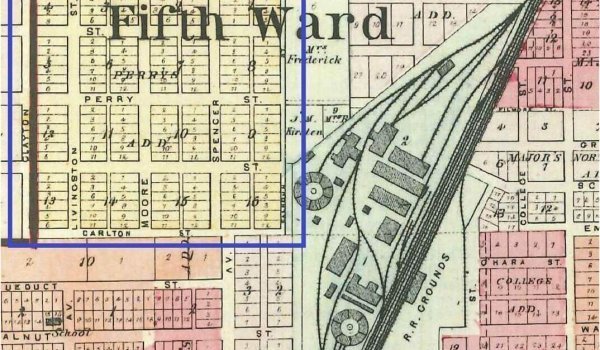
'Forty Acres:' Bloomington’s Irish Railroad Neighborhood
- PowerPoint
- 60 mins
- Contact Bill Kemp
Much of Bloomington’s old west side was shaped by the Chicago & Alton Railroad. Perry’s Addition, popularly known as “Forty Acres,” was adjacent to the bustling C&A locomotive shops and sprawling freight yard. It first became home to Irish immigrants, attracted by the promise of railroad jobs. German-speaking Hungarians and others followed.
This illustrated presentation of one of the Twin City’s more colorful neighborhoods includes maps, postcards, and photos dating from the nineteenth century to the present.
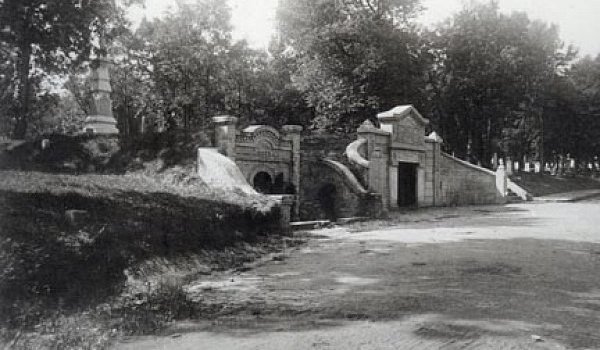
A History of the Evergreen Cemetery Walk
- PowerPoint
- 60 mins
- Contact Candace Summers
Learn about the past characters, burial customs, cemetery history and architecture, and more.
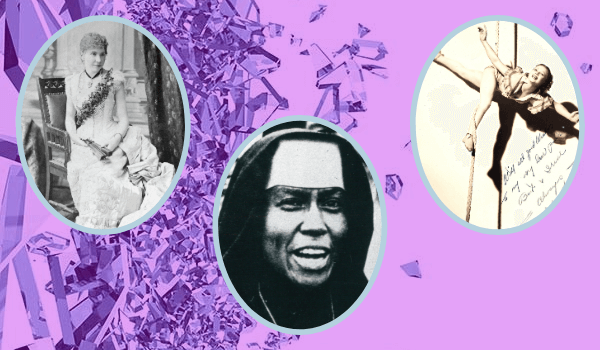
Artists, Advocates, Acrobats, and More! Women Who Made McLean County History
- PowerPoint
- 60 mins
- Contact Candace Summers
Making history has always come naturally to women, and the women of McLean County are no exception. Yet, the stories of these historic women often go untold.
This program highlights a variety of McLean County women who shaped our history. From the first woman Illinois State Senator, Florence Fifer Bohrer; to the “Queen of the Flying Trapeze,” Antoinette Concello; and Civil Rights activist Sister Mary Antona Ebo, this illustrated program will explore their lives and recognize their lasting contributions to our community and our world.
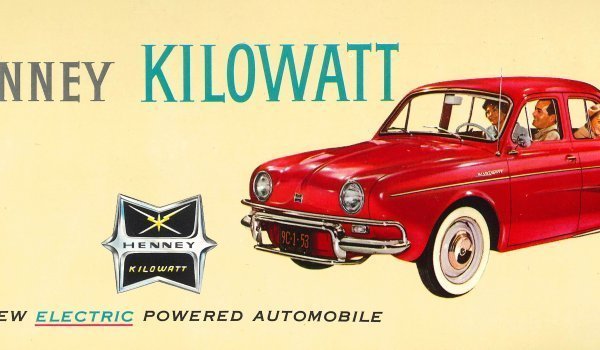
Before Rivian: The Henney Kilowatt--Bloomington's Battery-powered 'Car of Tomorrow'
- PowerPoint
- 60 mins
- Contact Bill Kemp
Long before Rivian become one of the hottest electric automakers on the planet, the Twin Cities were center stage for another battery-powered vehicle–the Henney Kilowatt, a project of the National Union Electric Co., a conglomerate whose holdings included Bloomington-based Eureka-Williams Co.
The electric propulsion system was designed by Eureka-Williams engineers, and the cars were assembled in Bloomington. Although less than 50 autos were sold during the two-year (1959-1960) manufacturing run, the Henney Kilowatt story is in many ways more essential today than it was 70 years ago.
The Museum Archives holds a treasure trove of original Henney Kilowatt papers, and this program will showcase many fascinating photos, promotional materials, correspondence, and engineering documents–many of which have never seen the light day! Bill promises an electrifying, edifying time for all!

Buckle of the Corn Belt: An Illustrated Tour of McLean County and Everyone’s Favorite Grain
- PowerPoint
- 60 mins
- Contact Bill Kemp
Librarian Bill Kemp leads a mostly light-and-breezy tour of what corn has meant to McLean Country, with his historical narrative enlivened with informative, imaginative, and humorous illustrations and photographs.

Dine with the Dead: Cemetery Customs and Traditions of Days Gone By
- Walking Tour
- 60 mins
- Contact Candace Summers
Enjoying a picnic in a cemetery was not always a taboo activity. Quite the contrary—a graveside lunch was a leisure activity for many. People often dined while visiting their dearly departed, and city residents regularly took advantage of cemeteries for strolls and carriage rides too.
In the spirit (pun intended) of the age, enjoy a picnic lunch on the beautiful grounds of Evergreen Memorial Cemetery (one of Bloomington’s oldest cemeteries) and embark on a one-hour guided tour to learn about funerary customs of the Victorian-era, explore the types of monuments that populate the cemetery, and hear stories of some of the McLean County citizens who reside there.
After the tour, you can stay and enjoy your own picnic lunch. So grab a blanket, a box lunch from your favorite local restaurant (or from home too!) and enjoy spending some time in the cemetery like days gone by.
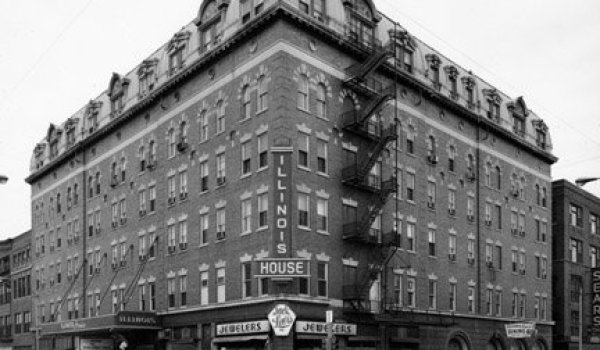
Downtown Bloomington Architectural Tour
- Walking Tour
- 60 mins
- Contact Candace Summers
A walking tour of the past and present buildings of historic downtown Bloomington. Come and learn about the architectural designs of some of the historic buildings in Downtown, along with a history of what has been housed in them over the years.
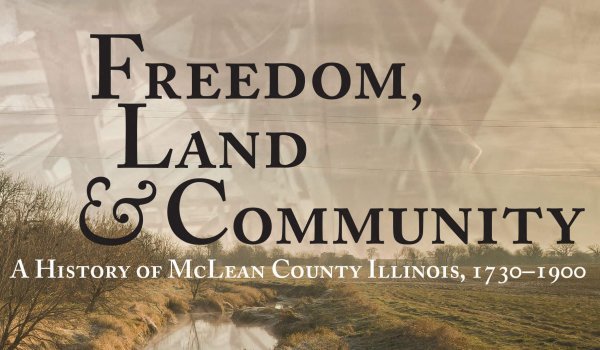
Freedom, Land, and Community
- PowerPoint
- 60 mins
- Contact Greg Koos
Freedom, Land, and Community: A History of McLean County Illinois, 1730‐1900 tells the story of the diverse peoples and events of this county. Using sources contemporary with the events described, it relates the struggle to shape the land, build community, and secure freedom as these communities knew and defined it. Native peoples, women and men, African Americans, Irish and German immigrants all sought and contested for their freedom. People whose voices have not been heard in previous works about Central Illinois are included here.
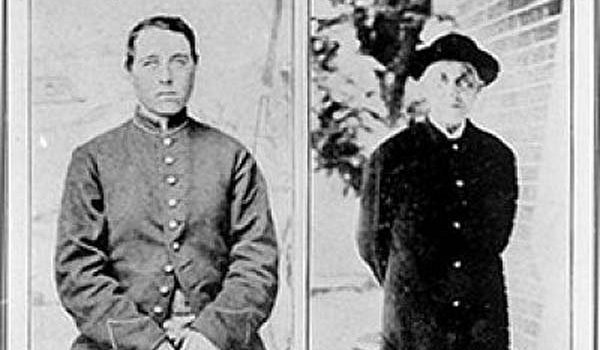
From Jenny to Albert: Pvt. Cashier and the Civil War
- PowerPoint
- 60 mins
- Contact Bill Kemp
During the Civil War, Pvt. Cashier spent three years on the march through the South with the 95th Illinois Volunteer Infantry Regiment, all the while participating in some of the bloodiest campaigns of the Western Theater. Though a true tale of war and woe, this remarkable story becomes even more remarkable when one learns that Cashier was actually born as Jennie Hodgers.
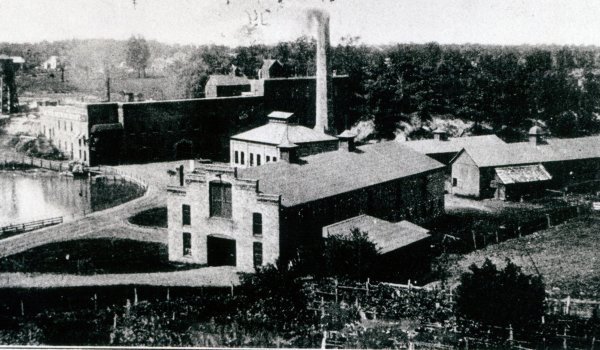
German Brewers in Bloomington, IL 1859-1920
- PowerPoint
- 45 mins
- Contact Rochelle Gridley
German immigrants brought traditions that had a big effect on the Twin Cities, including the breweries, beer gardens and bands. This program will explore the impact German immigration had on Bloomington and McLean County, and the history of the Meyer Brothers Brewing Company.

Hellraisers & Heroines
- PowerPoint
- 45 mins
- Contact Mike Matejka
A look at Illinois' working class labor activists who organized unions, fought for better conditions and their middle class allies.
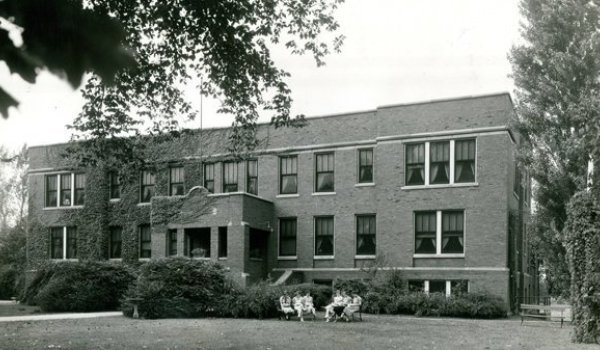
Lucy's Girls: Lucy Orme Morgan and the Girl's Industrial Home
- PowerPoint
- 60 mins
- Contact Candace Summers
Lucy Orme Morgan was a woman who was passionate about social welfare and was active in numerous philanthropic activities throughout her lifetime. However, her passion (and what would become the most distinguishable effort in her life) was the Girl's Industrial Home.
Founded in 1889, the Girl's Industrial Home was a place for dependent children who were neglected or had no one to care for them. It was an institution where girls would be taught useful things to prepare them for a life of independence when they were of age. To Lucy, it was her "hobby" to make it "a home and keep it as far as possible from being an institution."
For more than 30 years, the Home flourished under her watchful eye. And because of her service to that institution, the board of the Home honored that service by renaming it as "The Lucy Orme Morgan Home" in 1929.
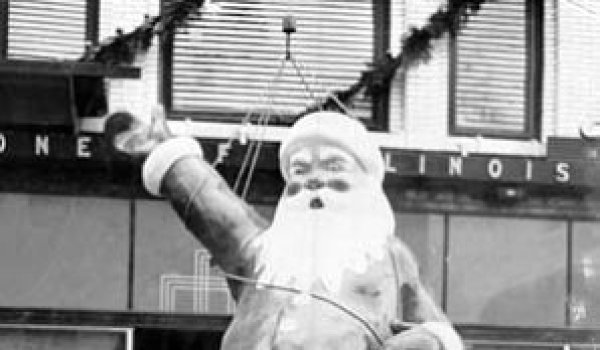
McLean County Holiday Stories
- PowerPoint
- 60 mins
- Contact Bill Kemp
See and hear how local residents celebrated the holidays from the pioneer era into the mid-20th century. Learn the important role the German community played in popularizing many Christmas traditions, and travel back to a time when downtown Bloomington was a retail wonderland!
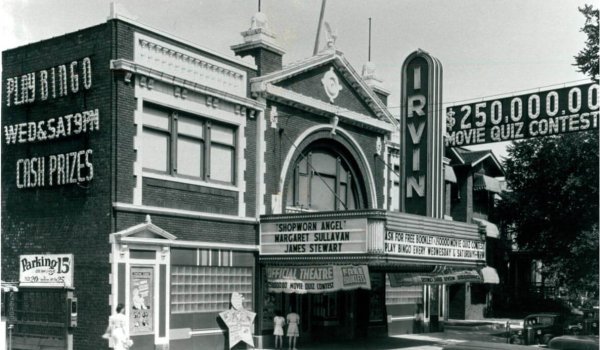
McLean County Lost: An Illustrated Tour of Vanished Worlds
- PowerPoint
- 60 mins
- Contact Bill Kemp
From the tallgrass prairie that long ago dominated this stretch of Central Illinois to the street cars that once trundled down the shaded streets of the Twin Cities, this program is a wistful look at the distant and not-so distant past. Come mourn the loss of everything from once-vibrant main streets to old movie houses.
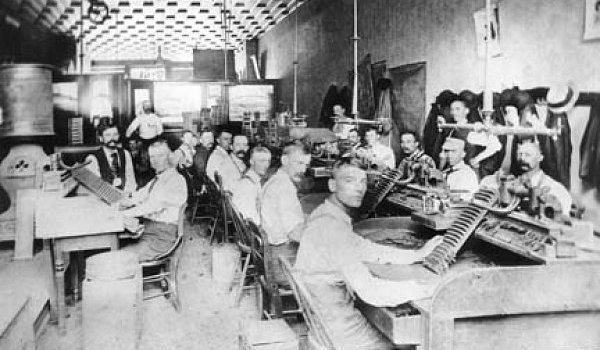
McLean County Workers & Their World
- PowerPoint
- 45 mins
- Contact Mike Matejka
A look back at the working people who shaped McLean County, from cigar makers to candy makers, railroad workers to fire fighters, and their efforts to have a voice through unionization and community involvement. A 20 minute version of this program is also available.
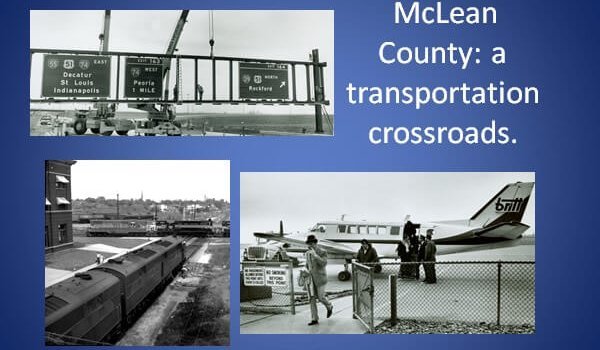
McLean County: Transportation Crossroads
- PowerPoint
- 45 mins
- Contact Mike Matejka
How the railroads, public transit, highways, and air service shaped our community and its connections with the world beyond our local borders. A 20 minute version of this program is also available.

Mourning in McLean: The Story of Death, Grieving, and Funerary Customs in McLean County
- PowerPoint
- 60 mins
- Contact Candace Summers
Death is one of the only guarantees in life.
In early U.S. history, death was a more frequent occurrence, arriving through disease, starvation, violence, and constant warfare. For those who remained after a loved one passed beyond the veil, mourning took many forms.
Mourning in McLean explores perceptions of death, ritualistic practices, and customary expressions of grief in Central Illinois from the mid-19th century to the early 20th century. This illustrated program explores topics such as post-mortem photography, hairwork, mourning wreaths, ribbons, altars, memorial cards, monuments and monument makers, and funeral homes.
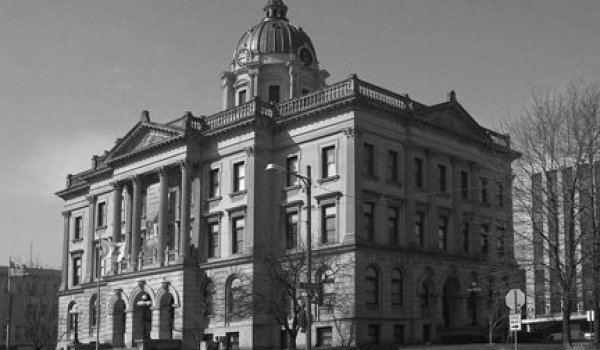
Old McLean County Courthouse
- Walking Tour
- 60 mins
- Contact Candace Summers
Tour the old McLean County Courthouse and learn about its history and architecture. Maximum of 20 people, minimum of 10.
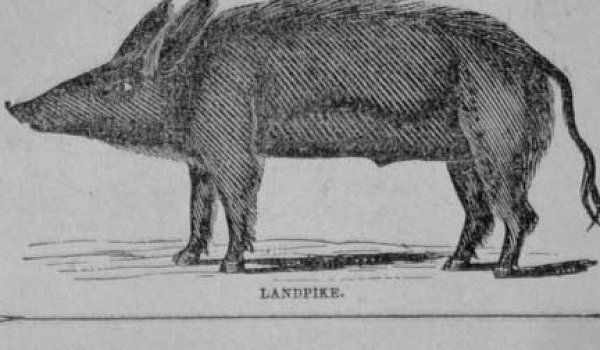
Pioneer Cattle and Hog Droving
- PowerPoint
- 60 mins
- Contact Bill Kemp
Before the coming of the railroads, McLean County Farmers marched livestock to markets as far away as Chicago and Cincinnati. Can you imagine driving 2,000 hogs 120 miles to Chicago in the wind, ice, and snow of November? Isaac Funk and other area livestock farmers lived to tell the tale!.
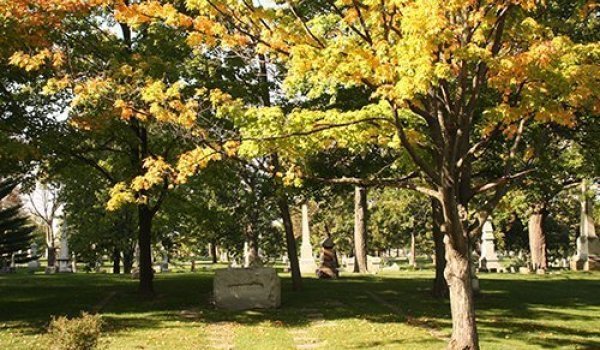
Step On Tour of Evergreen Memorial Cemetery
- Walking Tour
- 60 mins
- Contact Candace Summers
A walking tour of Bloomington's oldest cemetery featuring information about cemetery art and architecture, the evolution of monument styles and materials, and information about Evergreen Memorial Cemetery's long history. The tour will also feature information about individuals who have been featured on the McLean County Museum of History's longest running outreach event, the Evergreen Cemetery Walk. Maximum of 20 persons.
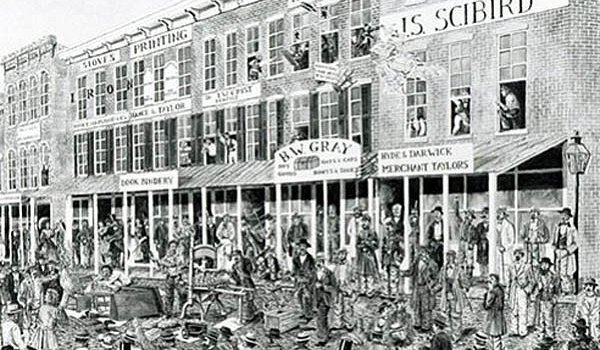
The 'Lost Speech' Found: Abraham Lincoln and the Founding of the Illinois Republican Party
- PowerPoint
- 60 mins
- Contact Bill Kemp
On May 29, 1856, Lincoln gave the keynote address at a convention held in downtown Bloomington to establish a new political party opposed to the expansion of slavery—the Republican Party. Learn why this speech became to be known as the “Lost Speech” … and how it’s not really lost!

The 1918-1919 Flu Pandemic in McLean County
- PowerPoint
- 45 mins
- Contact Candace Summers
While war raged across Europe, another enemy was beginning its attack--one that did not care whose side you were on. Despite its contested origins, a particularly strong strain of influenza spread quickly throughout the entire world between 1918-1919, killing roughly 15 to 50 million people, and infecting one-fifth of the world's population. This program will explore the impact of the Influenza Pandemic on McLean County and hear from one individual, Carolyn Schertz Geneva, who survived it.
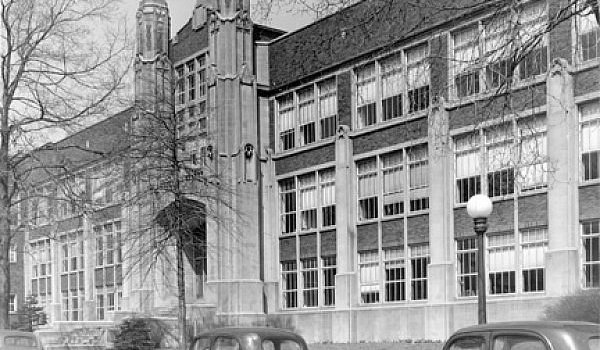
The Architecture of A. L. Pillsbury
- PowerPoint
- 60 mins
Bloomington architect Arthur Pillsbury designed over 800 homes, schools, and businesses in Illinois during his brief, but brilliant career. During this program, participants will learn about his education, career, and his impact on the Bloomington-Normal community.
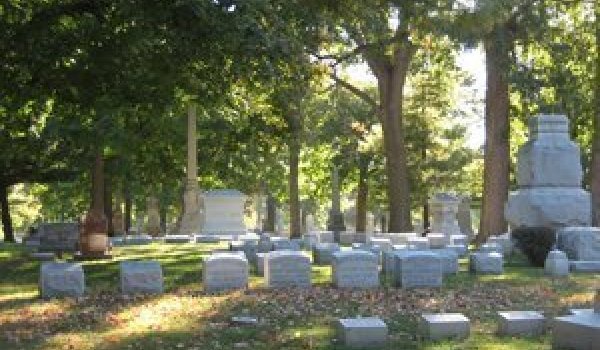
The Monuments Speak: The Art and Architecture of Evergreen Memorial Cemetery
- PowerPoint
- 30 mins
- Contact Candace Summers
Ever wonder what a tree trunk monument means? Or the symbolism behind a lamb engraved on a tombstone? This program will explore the meanings of the large variety of symbols found on cemetery monuments and markers, what types of materials monuments are made out of, and the evolution of the size and style of monuments, using diverse features and monuments found at Evergreen Memorial Cemetery as examples.

The Night the Stars Fell
- PowerPoint
- 60 mins
- Contact Bill Kemp
On November 13, 1833, the nighttime heavens lit up like a Fourth of July sparkler as tens of thousands of meteors streaked through the darkened sky. Known as the "Night the Stars Fell," it proved to be the greatest meteor shower in U.S. history. What did McLean County residents make of this fantastic and fearful display? How did this event alter our understanding of meteors and meteor showers? Learn the answer to these and other questions in this out-of-this-world talk!
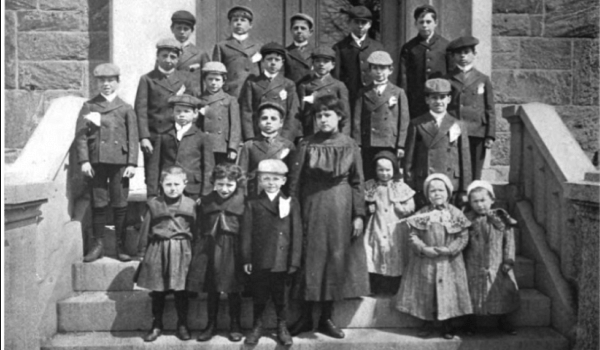
The Orphan Train in McLean County
- PowerPoint
- 60 mins
- Contact Rochelle Gridley
From 1872 to 1890 the western agency of a New York Orphanage was in Normal, Illinois. Learn about the fate of orphans brought to McLean County by the famed trains over a 60 year period.

The Showmen's Final Resting Place
- PowerPoint
- 60 mins
- Contact Candace Summers
Bloomington and Normal has been home to a variety of industries throughout its history. One such industry, one which members of this very community may not know about, was that of producing aerialists and circus performers. It could be said that Bloomington-Normal was a factory, churning out internationally renowned performers that would influence and train generations to come. For more than 80 years, spanning the 1870s until the 1950s, countless numbers of individuals left their mark on history. And a significant number of these performers decided to make Bloomington-Normal their final resting place as well.
This illustrated program will identify who those individuals are, what cemetery they are buried in, and provide detailed information about the monuments and markers at their final resting place.
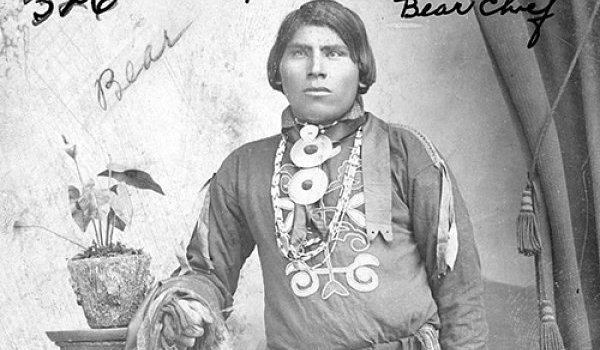
The Unconquerable: Kickapoo of Central Illinois
- PowerPoint
- 60 mins
- Contact Bill Kemp
The Kickapoo, a fiercely independent people, inhabited this stretch of Central Illinois when the first Euro-American settlers arrived in the early 1820s. This talk will include rare 1906 photographs of Kickapoo living in Brown County, Kansas. These photographs were commissioned by Milo Custer, an early curator of the McLean County Historical Society.
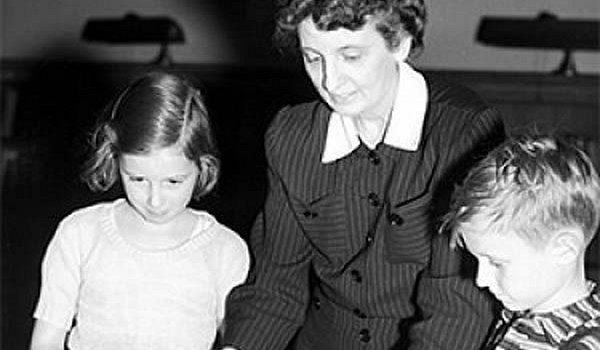
To Be a Writer, One Has To Be a Reader: the Life and Work of Clara Louise Kessler
- PowerPoint
- 60 mins
- Contact Candace Summers
Clara Louise Kessler was an author, a teacher, and a librarian who had a lifelong interest in books, poetry, songs, and children. She began her career working with children as a kindergarten teacher first, and then embarked on a 33-year long position as the head children's librarian at Withers Public Library (today named Bloomington Public Library).
Her mission was not only to present the very best children's literature and encourage its enjoyment, but to create an environment which would stimulate children's imaginations, encourage children to freely express themselves, and help children grow into adults that would help build a better Bloomington.
She helped shape the lives of many people, in particular children, in this community through every book she recommended, every poem she encouraged to be written, and every story by her own hand she shared.
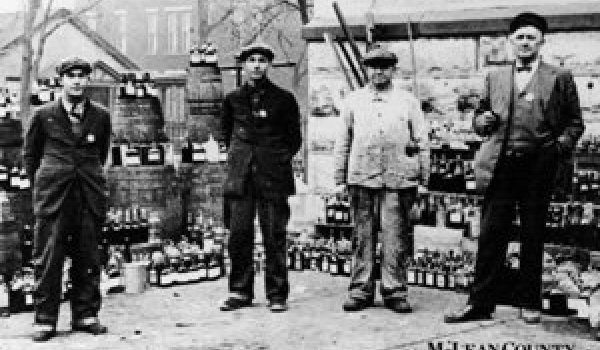
Wet or Dry? - Prohibition in McLean County, 1920-1933
- PowerPoint
- 60 mins
- Contact Candace Summers
McLean County may not seem like the typical area where bootlegging and rum running flourished in the early 20th century- but it did! This presentation will explore who those law breakers were, how citizens responded to Prohibition, and answer the question why Prohibition ultimately failed.
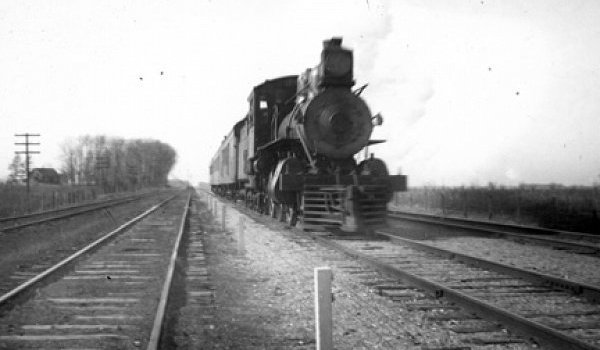
What's Coming Down the Line? The Railroad in the American Mind
- PowerPoint
- 45 mins
- Contact Mike Matejka
A look at the railroad's impact on the nation's economy, culture, folklore, and children.
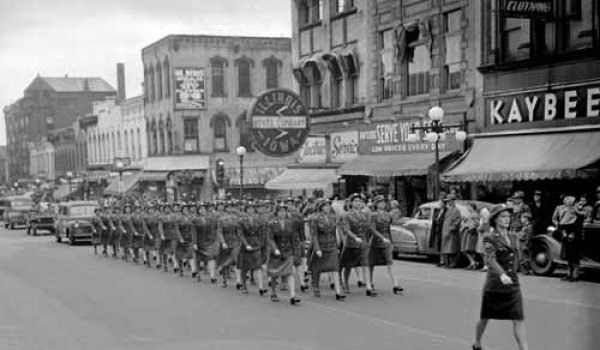
Women Called to Action: Women in World War II
- PowerPoint
- 60 mins
- Contact Rochelle Gridley
Dozens of women from McLean County volunteered and enlisted with the U.S. military during World War II. Women worked all over the United States, in Europe and the Pacific to defend their country in roles that were previously filled by men. Learn about the challenges they faced, the work they performed and where they served in this power point presentation.